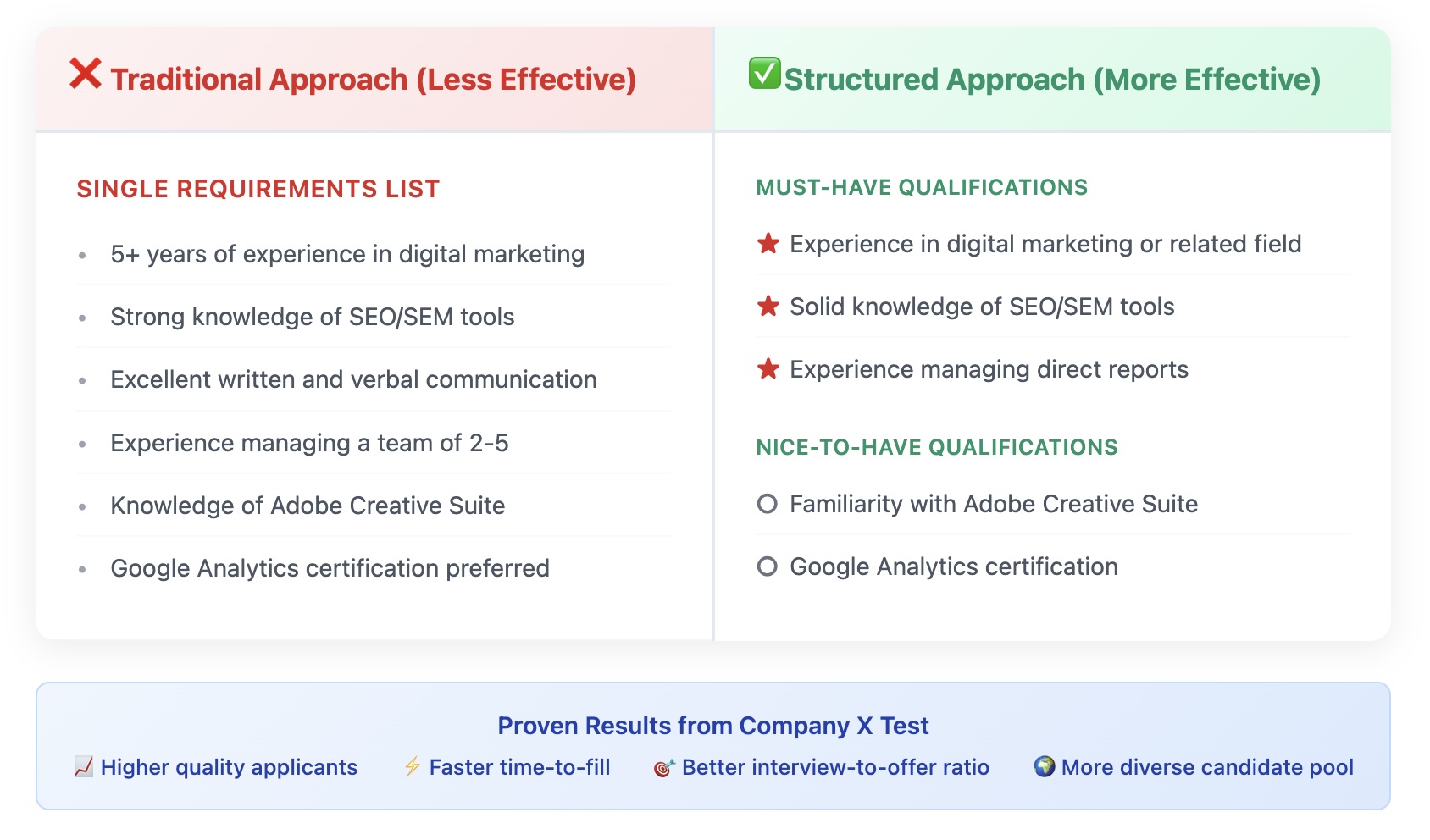A well-crafted time off request form is the key to coordinating how and when employees take time off. Because time off is such a crucial part of compensation and benefits packages, it’s important to effectively manage how employees request and receive it.
In this article, we’ll review the purpose and elements of a time off request form. We’ll also share how to create one, some best practices for using it, and provide a downloadable time off request form template.
Contents
What is a time off request?
Why is a time off request form needed?
How do you create a time off request form?
6 time off request best practices
Time off request form template
FAQ

What is a time off request?
A time off request is a formalized method of anticipating and planning for employee absences. The process involves employees submitting a paper or online document that states the specific dates they would like to take leave from work and then receiving approval or denial from their employer.
Although they should be handled consistently throughout an organization, time off request requirements vary among different types of businesses. For organizations that function with self-directed employees, time off requests may be more of a notification than a request for approval. An employee who manages their own schedule may be free to simply state, “I’ll be gone the first two weeks of July.”
However, for a wide variety of organizations, employees must follow a structured approach to taking time off so the business can maintain operations. For example, grocery stores need a certain number of cashiers every shift, and factories must have enough workers on the floor to preserve production levels. In these cases, employees should obtain approval for their absences in advance.
Why is a time off request form needed?
An organized format helps organizations adhere to leave policies. Documenting requests for time off serves several purposes, such as:
- Streamlining the request and approval process for HR, managers, and employees
- Tracking employee absences and maintaining time off policy consistency
- Receiving advanced notice of absences to allow time for staffing needs planning
- Retaining records for compliance with company policies and legal requirements.
How do you create a time off request form?
An employee time off request form must be simple to use and include all the critical information. Carefully thinking through how to develop a form specific to your organization will help you accomplish this.
Whether starting from scratch or customizing a template (see our sample below), the following nine steps cover the main elements a time off request should include:
- Determine which information the form needs to include: Collecting all the relevant information on one form simplifies the process and prevents approval delays. Typically, this includes:


- Choose a format: According to your organization’s resources and workforce needs, select the appropriate format for the time off request form. Options include a paper document, a digital form via email, or an HR information system submission. Provided that all your employees can access them, digital formats are the most convenient and easiest to track.
- Design the form: Create a visual document for the time off request form. This can be done through Google Forms or Word, for example. Construct a form that is eye-catching, straightforward, and logically organized.
- State the instructions: Provide clear, concise instructions on the top of the form that describe how to fill it out and the submission and approval process. Be sure to include how far in advance of the leave employees must submit the form. In addition, clarify where to submit it and explain how employees are notified of approval or denial.
- Add fields for required information: Create fields for all the necessary details you established in Step 1. Ensure the fields are clearly labeled and easy to understand and that each one contains appropriate space for accommodating the applicable information.
- Incorporate an approval section: The person who will approve or deny the time off request needs a place to formally indicate the decision. It should also have space for comments and either a physical or digital signature.
- Ensure the form is user-friendly: Ask a couple of HR colleagues to review the form with a fresh set of eyes. In addition, be sure to get feedback from each department that will need to access the form, as well as the employee perspective, to confirm that it flows well, is easy to use, and contains everything that will be required.
- Implement and communicate: Once the form is finalized and ready to implement, make sure everyone knows about it. Announce that there is a new time off request method and communicate with all employees the guidelines for how the process works. If necessary, provide training, such as a quick instruction video.
- Review and update regularly: Don’t allow the time off request form to become inadequate or obsolete. Periodically reviewing it and the process can reveal whether they still meet the organization’s needs or should be revised. Making needed updates will keep the time off requests running smoothly.
6 time off request best practices
Once you have an employee time off request form in place, there are some considerations for successfully implementing it. Here are six best practices for an effective time off request process:
1. Separate requests for vacation days from requests for medical time off
Although you can use the same unpaid or paid time off request form for all types of leave, medical leave must take priority.
It’s common policy and often required by law that employers provide sick days and time for employees to see doctors and receive treatments or therapy. Therefore, when balancing the number of absences in your workforce, time off for medical reasons should be approved before vacation days are granted. If need be, you could consider having a separate vacation request form.
2. Have a policy in place for when multiple people want the same day off
Certain times of the year are more desirable for taking time off, such as around holidays and school breaks. This means you are bound to have overlapped time off requests and must have a policy that will address these situations.
Is it “first come, first served” or do you approve based on seniority? Should managerial discretion play a role? Does the reason for the leave weigh in? For instance, would a wedding or family reunion be prioritized over a casual weekend getaway?
When you have a seniority rules policy, keep in mind that new hires will never get the week between Christmas and New Year’s off. This could cause a retention issue. Think through all these scenarios before creating your policy, as each business has different conditions and needs.
A union contract may also dictate how you approve days off, so make sure your policy matches the company’s legal obligations.
3. Set up rules for when people can request time off
Place reasonable boundaries around the timing of submitting requests. Allowing people to claim time off years in advance could mean that some will monopolize the most desirable days. However, you also want to affirm that employees have ample time to plan a trip.
On the other end of the spectrum, allowing people to make last-minute (non-emergency) leave requests can make covering their duties much more challenging.
Here is one example of setting parameters around time off request submission:
- At least 14 working days prior
- No more than one year in advance
- Requests for summer months must be submitted by March 31.


4. Don’t ask for too much personal information
Whatever time off employees are entitled to is their time. They shouldn’t have to justify how they spend their time off because their employer is prying into their reasons for taking it.
If you have a conflict where too many people want the same day off, you may need to prioritize based on the planned activity. However, if someone has available vacation time and the business won’t be adversely affected, their request should be granted without an inquiry.
5. Strive to say yes
According to a Pew Research Center survey, 46% of U.S. workers who have access to paid time off take less than what they are eligible for.
If there is any possible way to approve a day off, approve it. This is part of your employees’ compensation package; let them use and enjoy it.
6. Don’t revoke already approved time off
Approving an employee’s time off request and then revoking it harms employee morale and your employer brand.
When anticipating time off from work, people coordinate vacations with their families or traveling companions. This may include buying plane tickets and booking hotels. Having to cancel these plans is a major disappointment and inconvenience. It can also cause financial hardship.
These situations should be avoided to every extent possible. A well-organized time off request process can help safeguard against granting vacation days when they shouldn’t be.
Time off request form template
Whether you’re creating a paper form or confirming that a digital format contains all the information you need, the following form template can help you get started:


The exact content of the employee time off request form will depend on your organization’s specific requirements and location, but it should be as concise as possible. More detailed information isn’t required unless there is a conflict with too many people wanting the same day off.
However, certain situations may require a more expanded form. For instance, when employees are responsible for finding someone to replace them during their absence, you may choose to include space for them to name this person. Also, if your organization requires supplemental documentation to justify medical, military, or jury leave, you might want to add a place for this.


Over to you
Managing time off requests should create a balance between the demands of your organization and your workforce.
Employees need their allotted time off to refresh themselves or take care of personal business. Having a thorough, simple employee time off request form in place coordinates the authorization process to give employees easy access and reduce miscommunication and errors. In addition, it allows you to better plan for absences and practice good record-keeping to uphold your time off policy and legal compliance.
FAQ
A time off request is a formal method for employees to request and be granted time off for vacation, personal, medical, and other types of leave. By formalizing the request process, you can manage staffing needs and apply time-off policies consistently.
Best practices for dealing with time off requests include structuring how and when requests are made, fair handling of multiple requests for the same day, and governing how much personal information is required.
The exact content depends on your organization’s particular conditions and obligations. Standard components include employee information, dates/times of absence, type of leave, and approval or denial date.
Andrea Boatman is a former SHRM certified HR manager with a degree in English who now enjoys combining the two as an HR writer. Her previous positions were held with employers in the education, healthcare, and pension consulting industries.











